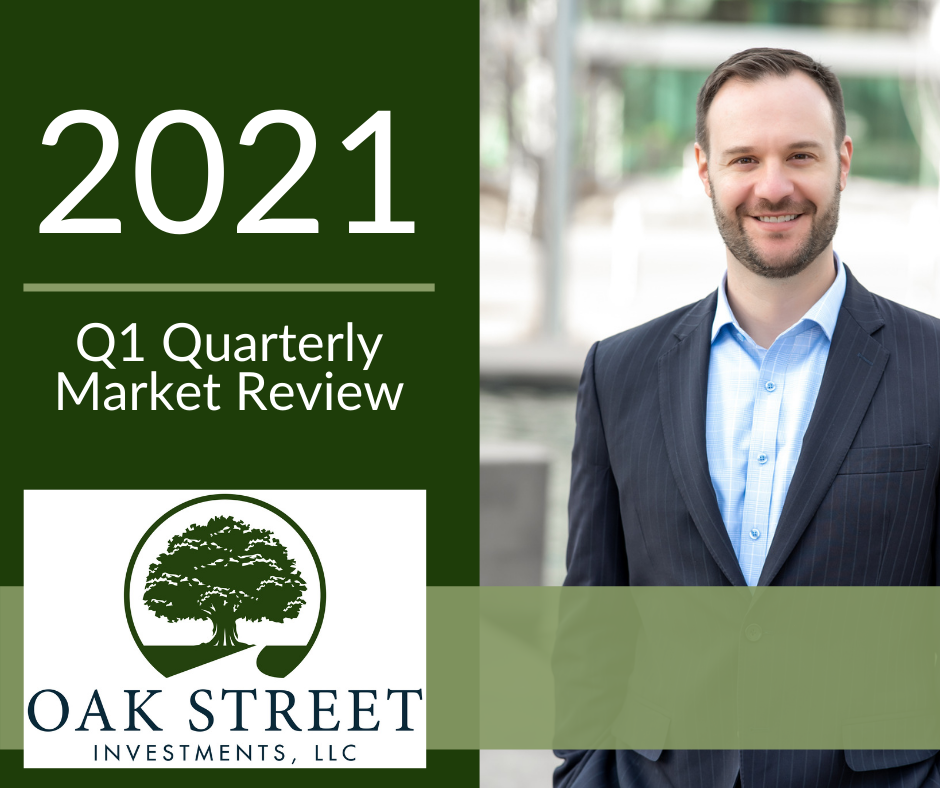
You Only Live Once: 2021 Q1 Quarterly Market Review
You only live once!
Social media investors have banded together on unconventional platforms to drive up the prices of a handful of “meme stocks,” seemingly without traditional evaluation of investing risks and rewards. They made headlines with their “short squeeze” of GameStop (GME), and, as they garner media attention, their tactics continue. While it’s not the intended victim of the YOLO traders, will the efficient market hypothesis be a casualty of these events? The answer depends a lot on your definition of efficient markets. Perhaps long-term investors would be better served questioning the potential impact on their investment philosophy.
Fama (1970) defines the efficient market hypothesis (EMH) to be the simple statement that prices reflect all available information. The rub is that it doesn’t say how investors should use this information. EMH is silent on the “correct” ways investors should use information and prices should be set. To be testable, EMH needs a companion model: a hypothesis for how markets and investors should behave. This leaves a lot of room for interpretation. Should asset prices be set by rational investors whose only concerns are systematic risk [1] and expected returns? It seems implausible to link recent meme-stock price movements to economic risks. Rather, they seem fueled by investor demand to be part of a social movement, hopes to strike it rich with a lucky stock pick, or plain old schadenfreude.
Supply and Demand at Work
There is a vast ecosystem of investors, from individuals investing in their own accounts to governments and corporations who invest on behalf of thousands. Ask investors why they invest the way they do, and you’ll likely get a range of goals and approaches just as diverse. It’s this complex system that generates the demand for stocks. Another complex system fuels the supply of stocks.
Supply and demand meet at the market price. People may contend that the market is not always efficient, or rational, but the stock market is always in equilibrium. Every trade has two sides, with a seller for every buyer and a profit for every loss.
There are plenty of well-studied examples that show supply and demand at work. The huge increase in demand for stocks added to a well-tracked index often creates a run-up in the stock price. Some of this price increase can be temporary and reversed once the tremendous liquidity demands at index reconstitution [2] are met. Index reconstitution is just one example; instances of liquidity-driven price movements happen all the time. It is well documented that liquidity demands can produce temporary price movements. [3] Investors may wonder if temporary price dislocations motivated by users of r/WallStreetBets differ from those caused by changes to an index. Lots of buying puts temporary upward pressure on prices, which later fall back to “fundamental value”–it sounds familiar. The more relevant observation may be that markets are complex systems well adapted to facilitate the supply and demand of numerous market participants.
There are numerous reasons people may be willing to hold different stocks at different expected returns. Can all those differences be explained by risks? Doubtful. To quote Professor Fama, “The point is not that markets are efficient. They’re not. It’s just a model.” [4] EMH can be a very useful model to inform how investors should behave. We believe investing as if markets are efficient is a good philosophy for building long-term wealth. Trying to outguess markets might be a quick way to destroy wealth.
It’s true, you only live once. The good news is that investors can look to market prices, not internet fads, to pursue higher expected returns. Theoretical and empirical research indicate higher expected returns come from lower relative prices and higher future cash flows to investors. Long-run investors can be better served by using markets, rather than chatrooms, for information on expected returns.
CLICK HERE TO DOWNLOAD THE FULL 2021 Q1 MARKET REVIEW
Citations:

[…] and prepare for continued stock and bond volatility. Zoom out. Turn off the TV and focus on longer-term returns. Remember that market sell-offs present higher future expected returns and that market-highs […]